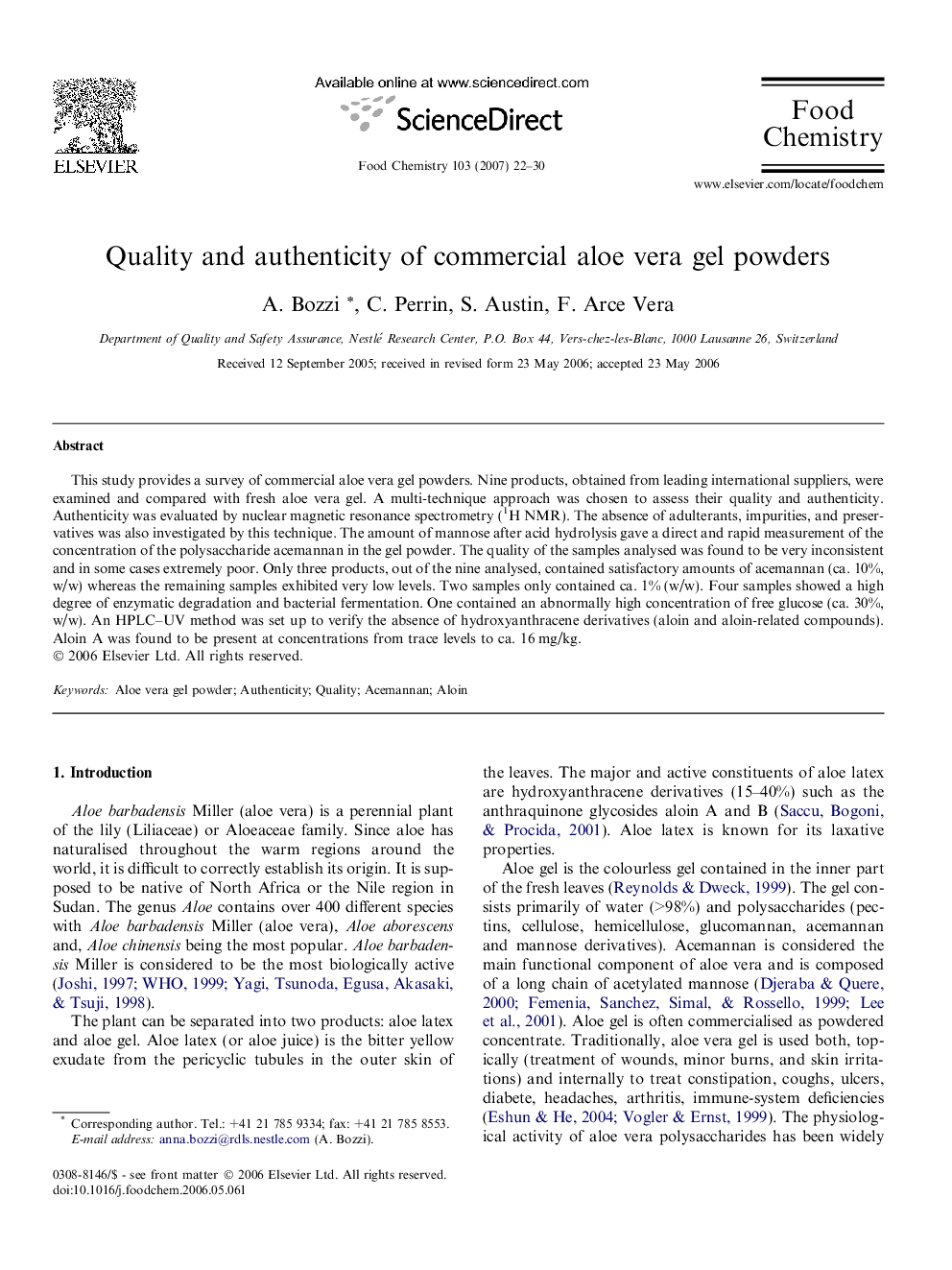| Article ID | Journal | Published Year | Pages | File Type |
|---|---|---|---|---|
| 1187962 | Food Chemistry | 2007 | 9 Pages |
This study provides a survey of commercial aloe vera gel powders. Nine products, obtained from leading international suppliers, were examined and compared with fresh aloe vera gel. A multi-technique approach was chosen to assess their quality and authenticity. Authenticity was evaluated by nuclear magnetic resonance spectrometry (1H NMR). The absence of adulterants, impurities, and preservatives was also investigated by this technique. The amount of mannose after acid hydrolysis gave a direct and rapid measurement of the concentration of the polysaccharide acemannan in the gel powder. The quality of the samples analysed was found to be very inconsistent and in some cases extremely poor. Only three products, out of the nine analysed, contained satisfactory amounts of acemannan (ca. 10%, w/w) whereas the remaining samples exhibited very low levels. Two samples only contained ca. 1% (w/w). Four samples showed a high degree of enzymatic degradation and bacterial fermentation. One contained an abnormally high concentration of free glucose (ca. 30%, w/w). An HPLC–UV method was set up to verify the absence of hydroxyanthracene derivatives (aloin and aloin-related compounds). Aloin A was found to be present at concentrations from trace levels to ca. 16 mg/kg.
